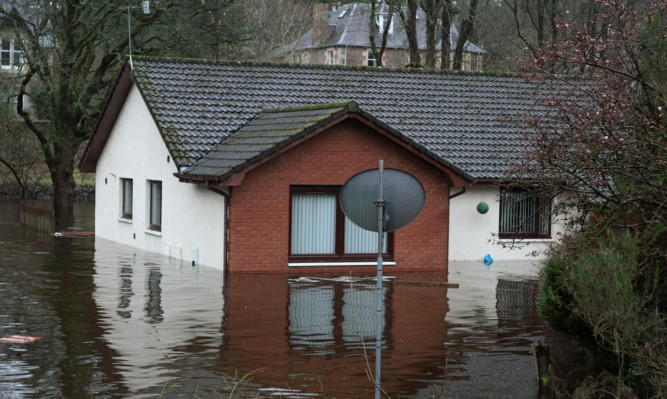We haven’t quite managed 40 days and 40 nights, at least not yet.
But for Tayside and the north east of Scotland the last 10 days have seemed rather like it. With the weather outlook still uncertain we are not yet on to the high and safe ground.
However, we are now able to take stock of what this torrential time has taught us. Firstly, the spirit of people in extremity. Both the resolve of those affected by flooding and the community willingness to help are truly admirable.
No one welcomes adversity but adversity often brings out the best in people and communities.
In Port Elphinstone on Saturday volunteers from Asda in Dyce turned up “mop handed” with buckets of disinfectant to help the clean-up operation for people trying to get their homes and gardens back into some kind of order.
Hoteliers in Inverurie and Dyce opened their doors freely to those needing emergency accommodation. They were not alone. In these situations lots of people in lots of communities around Scotland have stood up to be counted.
Secondly, the excellence of both our emergency services and the coordination of our efforts against flooding are truly impressive. Police officers, firefighters, council workers all willingly sacrificed their holidays when Storm Frank struck between Christmas and New Year. They don’t get everything right but those afflicted by flooding are fulsome in their praise for those who came to help.
Similarly the Scottish Environment Protection Agency (Sepa) flood alert system is neither perfect nor always accurate no forecasting and communication system can be.
However, it is light years ahead of what other countries have and indeed what Scotland used to have. Contrary to the ludicrous attacks of the opposition parties its funding is not being cut and never has been. On the contrary, the system is improving all the time. Sepa’s Floodline is now one of the most visited sites on the web.
Thirdly, we have a well organised system which financially helps areas affected by these emergencies, whether it be in the south of Scotland, Tayside, or Aberdeenshire.
Under the Bellwin formula the Scottish Government protects councils after spending of a certain level for the additional costs of an emergency response. This is paid at 100% and means that the costs of restoration are fully covered. In the case of Aberdeenshire, for example, the amount the council pays is a bit over £1 million.
All other additional costs over the emergency period are then picked up by the Scottish Government at a 100% grant, as indeed they should be. Then there is the additional support announced by the First Minister Nicola Sturgeon at the weekend. Now £16m has been committed to help get businesses and families back on their feet.
Where then do our lessons lie? Well for one thing we have to accept that extreme weather has become the new normal. More flood defences will be necessary but, in truth, it is doubtful if any defences could have stopped the raging torrents of the Dee and the Don in recent days. Instead we have to get much smarter.
The framework for this is already in legislation and was carried through in the Scottish Parliament’s Flood Risk Management Act of 2009. We now have to go further. We need a flood management plan for each river which looks at ways to reduce and control the volume of water.
We have to consider mass tree planting, controlled floodplains, hydro dams everything possible to make the force of nature work for us, not against us and allow further control of the volume of water moving downstream to built up areas.
The recently published Flood Risk Management Strategy for the River Tay provides the template for other areas and shows what can be planned. Now we have to do the same everywhere.
There are a lot of simple but powerful lessons to be learned from local experience. Blocked culverts and drains, undredged old waterways can wreak havoc with flood defences. Some of these lie on private land.
No one is allowed by law to pollute their neighbours’ land. Similarly unmaintained waterways are just as dangerous. It is possible to inadvertently flood your neighbours land by simple lack of maintenance. The management strategy for each river has to be backed by the powers necessary to do the job. Cleaning of clogged culverts and dodgy drains has to be done and the bill sent to the landowner.
Finally, there has to be a way to channel the goodwill of thousands to assist the most difficult cases generated by the floods.
